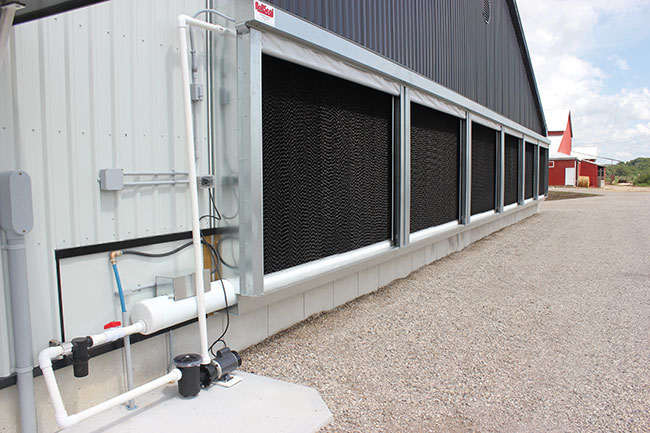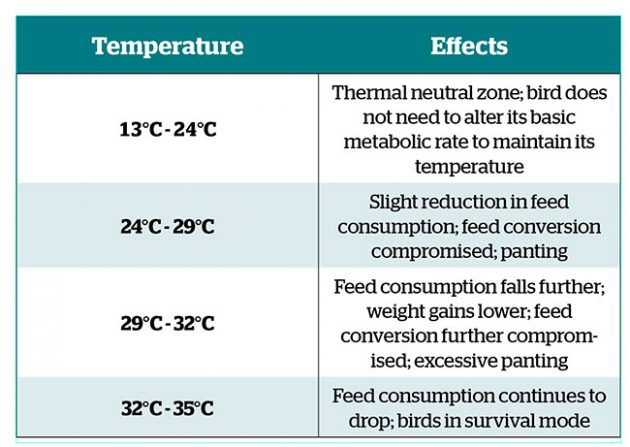
A guide to evaporative cooling systems
By William Alexander
Features Poultry Equipment New Technology The drier the air at the time of using the evaporative cooling, the more evaporation can occur, and the greater the cooling effect. Photo: OMAFRA
The drier the air at the time of using the evaporative cooling, the more evaporation can occur, and the greater the cooling effect. Photo: OMAFRA Hot summer days are just around the corner. And when we are complaining of high heat and humidity, you can bet that our turkeys need cooling systems.
Being unable to sweat means that the bird’s only method of cooling down is to pant or flap its wings.
Luckily, there are some evaporative cooling systems that can provide relief for turkeys in the barn.
Temperature and humidity linked
Systems such as cool cells and foggers can be very effective, but you should be aware that they will add humidity into the air. If the humidity is too high, birds will pant and experience stress as they try to cool down.
The drier the air at the time of using the evaporative cooling, the more evaporation can occur, and the greater the cooling effect.
Temperature and humidity are closely connected. When the temperature is above 27°C, the Rh is almost always below 80 per cent.
A simple rule of thumb is that you should not use evaporative cooling when the Rh (relative humidity) is greater than 80 per cent.
Evaporative cooling can be used when outside air is more than 31°C and humidity is less than 75 per cent.
Evaporative systems alone cannot reduce bird stress. They must be combined with a high level of air speed provided by tunnel ventilation. An air speed of 600 feet per minute can provide up to 8°C of wind chill.
Cool cells and foggers are two evaporative systems that provide cooling relief. What is the difference between the two, and which system is most effective for your region?

As temperatures rise, birds become more stressed, leading to serious effects on their health and performance. TABLE: North Carolina State University
Cool cells
Cool cells run in combination with tunnel fans. Water evaporates from the wet cool cell pads, placed along the side of the barn. They can produce up to 11°C of cooling. If you are in a region that regularly reaches high temperatures in the summer, cool cells will be worth the investment to keep your birds comfortable.
Take, for example, a situation where the temperature in the barn is 41°C. The air speed of the fans provide 8°C of wind chill cooling. In combination with the cool cells, which provide 11°C of cooling, 41°C has been cooled to 22°C ([41°C -11°C]-8°C =22°C). That puts the barn in the correct comfort zone.
Foggers
Fogger systems produces water droplets smaller than a misting or sprinkler system. They are typically less expensive than a cool cell system and can be retrofitted into an older barn. Foggers can produce up to 7°C of cooling. If you are in a region that reaches high temperatures less frequently, foggers can be effective at keeping your birds comfortable.
In a similar example as the one I previously noted, with the air speed providing 8°C of cooling and foggers providing 7°C of cooling, 35°C is modified to 20°C ([35°C-7°C]-8=20°C).
Key takeaway
No matter what system you use to cool down your birds, the biggest takeaway is to keep track of temperature, wind chill and humidity before turning on your system. You want to make sure that you are providing comfort for the turkeys rather than added humidity.
William Alexander is a technical service representative with Hybrid Turkeys. To contact him, email william.alexander@hendrix-genetics.com.
Print this page